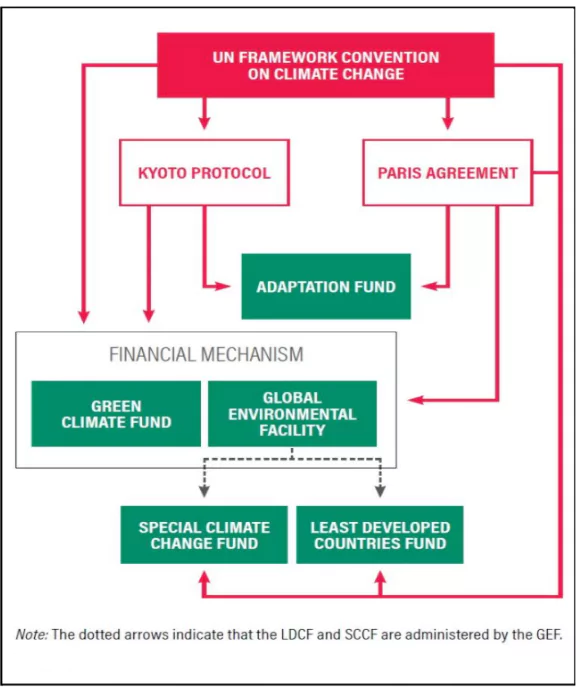![]() 10 Mar 2025
10 Mar 2025

The US has withdrawn from the board of the Loss and Damage Fund.
| Stage | Description | Example |
| Mitigation | Actions taken to limit climate change by reducing greenhouse gas emissions. | Transition to renewable energy sources like solar and wind power. |
| Adaptation | Proactive actions to cope with climate change impacts. | The Great Green Wall Initiative in Africa to combat desertification. |
| Loss and Damage | Irreversible consequences of climate change beyond mitigation or adaptation. | The submergence threat faced by Maldives due to rising sea levels. |

| Fund | Year/Agreement | Purpose |
| Global Environment Facility (GEF) | 1994 | Provides financial support to developing countries for environmental projects. |
| Adaptation Fund (AF) | 2001 (Kyoto Protocol) | Supports adaptation projects with full ownership by developing nations. |
| Clean Development Mechanism (CDM) | 2001 (Kyoto Protocol) | Allows developed countries to invest in emission-reduction projects in developing nations. |
| Green Climate Fund (GCF) | 2010 (COP16) | Supports mitigation and adaptation projects in developing countries. |
| Least Developed Countries Fund (LDCF) | 2010 (Under GCF) | Provides targeted support for least developed countries. |
| Special Climate Change Fund (SCCF) | 2010 (Under GCF) | Supports adaptation and mitigation projects in developing nations. |
| Cancun Agreements | 2010 | Mobilization of short-term and long-term climate finance. |
| Paris Agreement | 2015 | Developed nations committed to at least $100 billion/year in climate finance by 2025. |
| Loss and Damage Fund (LDF) | 2022 (COP27 & COP28) | Provides financial assistance to nations most vulnerable to climate change impacts. |
| Clean Technology Fund (CTF) | 2008 (Under World Bank) | Supports clean energy transitions. |
| Strategic Climate Fund (SCF) | 2010 | Focuses on innovative climate adaptation solutions. |
<div class="new-fform">
</div>